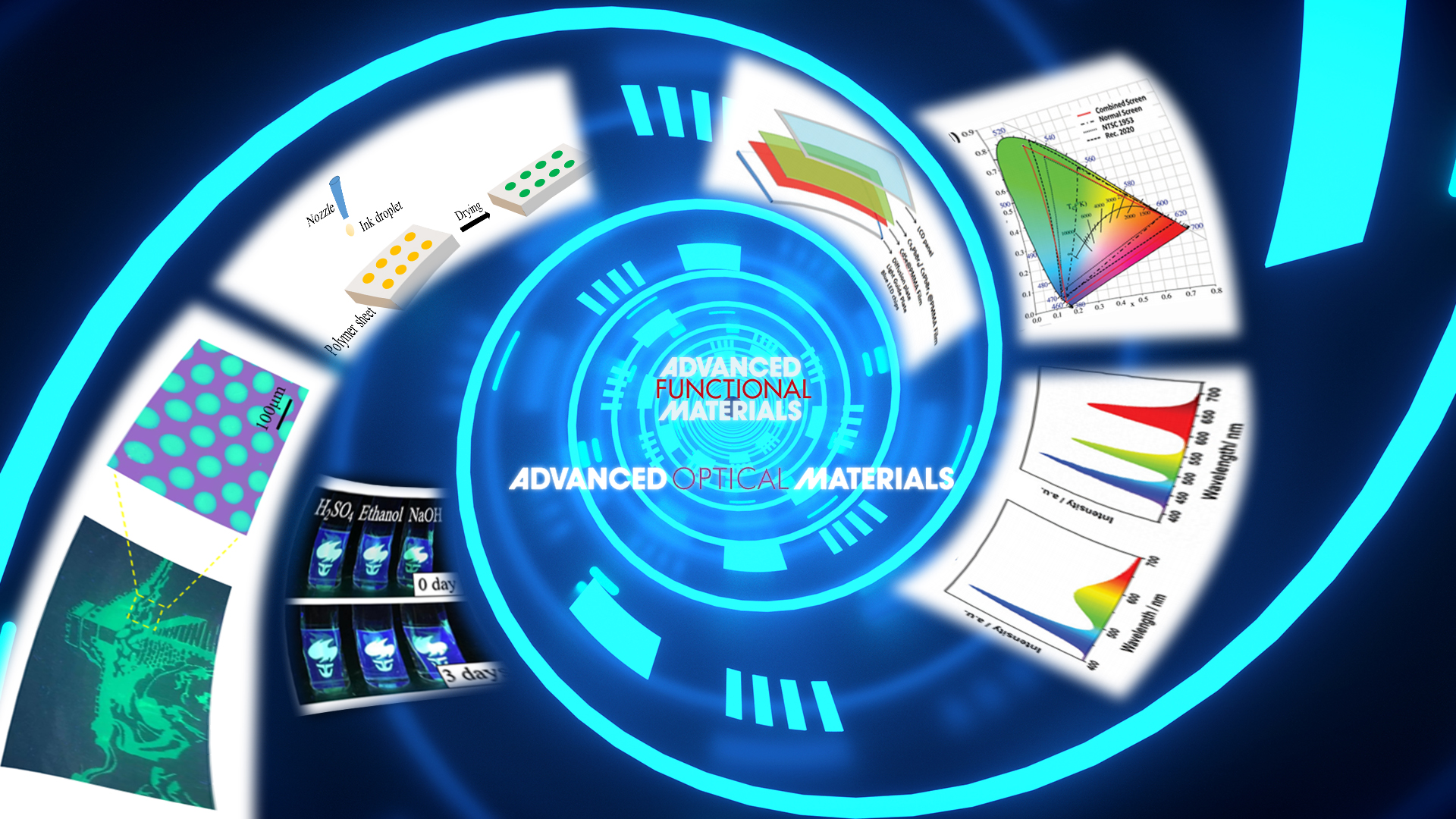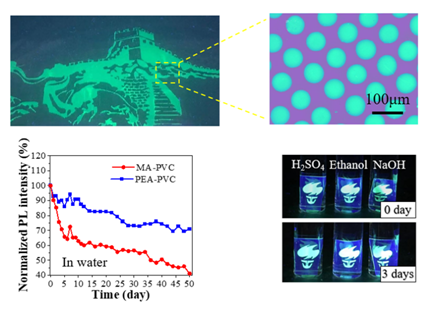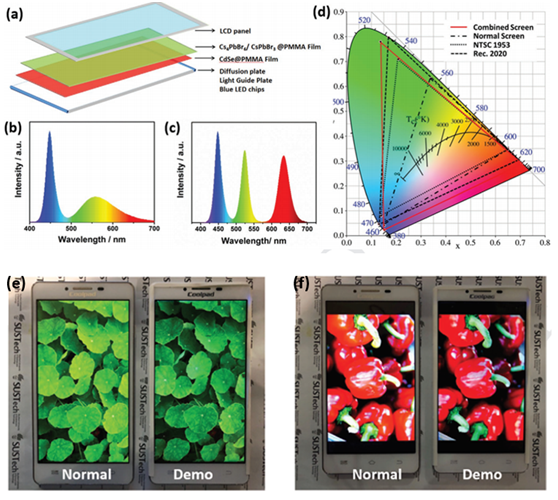While many think of perovskite for solar cells, there are significant opportunities for their use in lighting and displays. A research team at Southern University of Science and Technology (SUSTech) has been working relentlessly to make new progress in the perovskite enhanced displays.

Perovskite materials are ideal candidates for display and lighting because of their excellent optical properties, tunable bandgap, and efficient luminous properties. However, they lack the stability for commercial development. Considerable research has been put into perovskite materials to improve the displays on a variety of everyday items.
Professor Xiaowei Sun and Associate Professor Kai Wang (both Electrical and Electronic Engineering) have brought their research teams together to publish two significant papers in high-impact academic journals Advanced Functional Materials (IF = 15.6) and Advanced Optical Materials (IF = 7.1)
The paper published in Advanced Functional Materials was titled, “Highly Luminescent and Stable Green Quasi‐2D Perovskite‐Embedded Polymer Sheets by Inkjet Printing.” It proposed an inkjet printing strategy for in-situ generating quasi-2D perovskite on different polymer substrates. This unique strategy would protect the perovskite layer from erosion while improving its stability and increasing its luminescence.

Figure 1. In-situ inkjet printing of quasi-2D perovskite uniform pixels and patterns, and their water stability and chemical solution stability
The high-precision pattern composite material film, realized by in-situ inkjet printing quasi-2D perovskite technology, offers great promise in flat panel displays. It should reduce the cost of light conversion films in 4K and 8K display technologies significantly.
Visiting student from Jilin University, Siqi Jia was the first author of the paper. The co-corresponding authors of the paper were Xiao Wei Sun, Kai Wang, and Guangyu Li (Jilin University). SUSTech and Jilin University are the corresponding units. The other contributing unit was the Shenzhen Planck Innovation Technology Co. Ltd.
The authors would like to acknowledge support from the Ministry of Science and Technology of China, National Natural Science Foundation of China, Guangdong Province Key R&D Program: Micro-LED Display and Ultra-high Brightness Micro-display Technology, Environmentally Friendly Quantum Dots Luminescent Materials, Guangdong University Key Laboratory for Advanced Quantum Dot Displays and Lighting, Distinguished Young Scholar of Natural Science Foundation of Guangdong, Shenzhen Key Laboratory for Advanced Quantum Dot Displays and Lighting, Shenzhen Peacock Team Project, Shenzhen Innovation Project, and the High-Level University Fund of Guangdong Province.
Link to the paper: https://onlinelibrary.wiley.com/doi/full/10.1002/adfm.201910817
The paper published in “Advanced Optical Materials” was titled “Facile In Situ Fabrication of Cs4PbBr6/CsPbBr3 Nanocomposite Containing Polymer Films for Ultrawide Color Gamut Displays.” In this paper, the research group proposed a simple and effective method for the preparation of a Cs4PbBr6/CsPbBr3 perovskite nanocrystal film. The researchers prepared a polymer composite film that has a high conversion efficiency of light while having a low deterioration rate due to the dual protection by Cs4PbBr6 and the polymer matrix.

Figure 2. (a) Schematic diagram of the backlight structure of the mobile phone-based on the perovskite composite film; (b, c) the fluorescence spectrum of the original mobile phone screen and the new screen; (d) color gamut; (e, f) the original mobile phone screen and A comparison of the color effects of the new screen.
Compared to quantum dot films, the perovskite nanocrystal films provide more vibrant color details for smartphones, particularly in the green spectrum with a narrow full width at half maximum of 19nm (Figure 2).
This paper in Advanced Optical Materials has successfully demonstrated the outstanding advantages of high-performance perovskite composite films in wide-color displays. It provides significant support for commercial applications for these films.
Research Assistant Xiang Li was the first author of the paper. The co-corresponding authors were Professor Xiao Wei Sun and Associate Professor Kai Wang. Other contributions came from Shenzhen Planck Innovation Technology Co. Ltd., the National University of Singapore, and the University of Hong Kong.
This work was supported by the National Key Research and Development Program of China administrated by the Ministry of Science and Technology of China, National Natural Science Foundation of China, Guangdong Province Key R&D Program: Micro‐LED Display and Ultra‐high Brightness Micro‐display Technology; Environmentally Friendly Quantum Dots Luminescent Materials, Guangdong University Key Laboratory for Advanced Quantum Dot Displays and Lighting, Distinguished Young Scholar of Natural Science Foundation of Guangdong, High-Level University of Guangdong Province, Shenzhen Key Laboratory for Advanced Quantum Dot Displays and Lighting, Shenzhen Peacock Team Project, and Shenzhen Innovation Project.
Link to the paper: https://onlinelibrary.wiley.com/doi/full/10.1002/adom.202000232
Proofread ByYingying XIA
Photo ByDepartment of Electrical and Electronic Engineering, Yan QIU